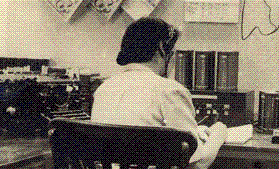What happened?
For the youth initiative step21, 70 young people from Berlin to Brno, Klagenfurt to Poznan, researched what happened in their home region at the time of National Socialism. For nine months, they sifted through archives and tracked down the last surviving contemporary witnesses.
They took part in editorial workshops in Germany and Poland and wrote a newspaper to fill in the "blank spots” left by the Nazi press. Supported by professional journalists and historians, the young Europeans studied personal stories of victims of National Socialism.
German press kept quiet
The team "Geschichtsjäger” (history hunters) from Zabrze in Poland wanted to find out more about Reichskristallnacht (Crystal Night) in 1938 in their small town. Hardly anything had been written about it in the German press.
"There were only blank spots about the events of that night”, they told the Chancellor. That was until they found a contemporary witness who told them that, that night, synagogues were burned down and the Nazis destroyed Jewish property.
Blank spots are shrinking
A team in Brno, the second largest city in the Czech Republic, carried out research on the college at Kaunitz. This team found a 90 year old witness who told them what actually happened.
The Gestapo turned the student halls of residence into a prison. Student rooms became prison cells; there were gallows in the courtyard. Former bathrooms were converted into interrogation rooms.
Pupils from Berlin looked into the life of communist Erich Boltze.
He was arrested by the Gestapo in 1933. A court sentenced him to three years in prison. After that, however, he was not released, but taken to the concentration camp at Sachsenhausen. There, in 1944, he was shot dead by the SS, along with 26 other German and French antifascists.
Together for human rights
During the research, the young people got to know each other. They realised that they have more things in common than differences. And they learned how important it is to demonstrate civil courage, even today. These girls and boys do not look away when fellow pupils in the playground hand out CDs with extreme right wing radical songs on them. They intervene.
"We must not make do with human rights on paper”, they write in their joint headline article. "We need to stand up for them!”
From Wednesday onwards, 30,000 copies of the Weisse Flecken (blank spots) newspaper will be circulated in schools, youth centres and memorials in the four participating countries. It is intended, as a model project, to inspire young people to do their own research into the blank spots in their own region. Anyone interested can order a copy of the newspaper free of charge by sending an email to: weisseflecken@step21.de.






